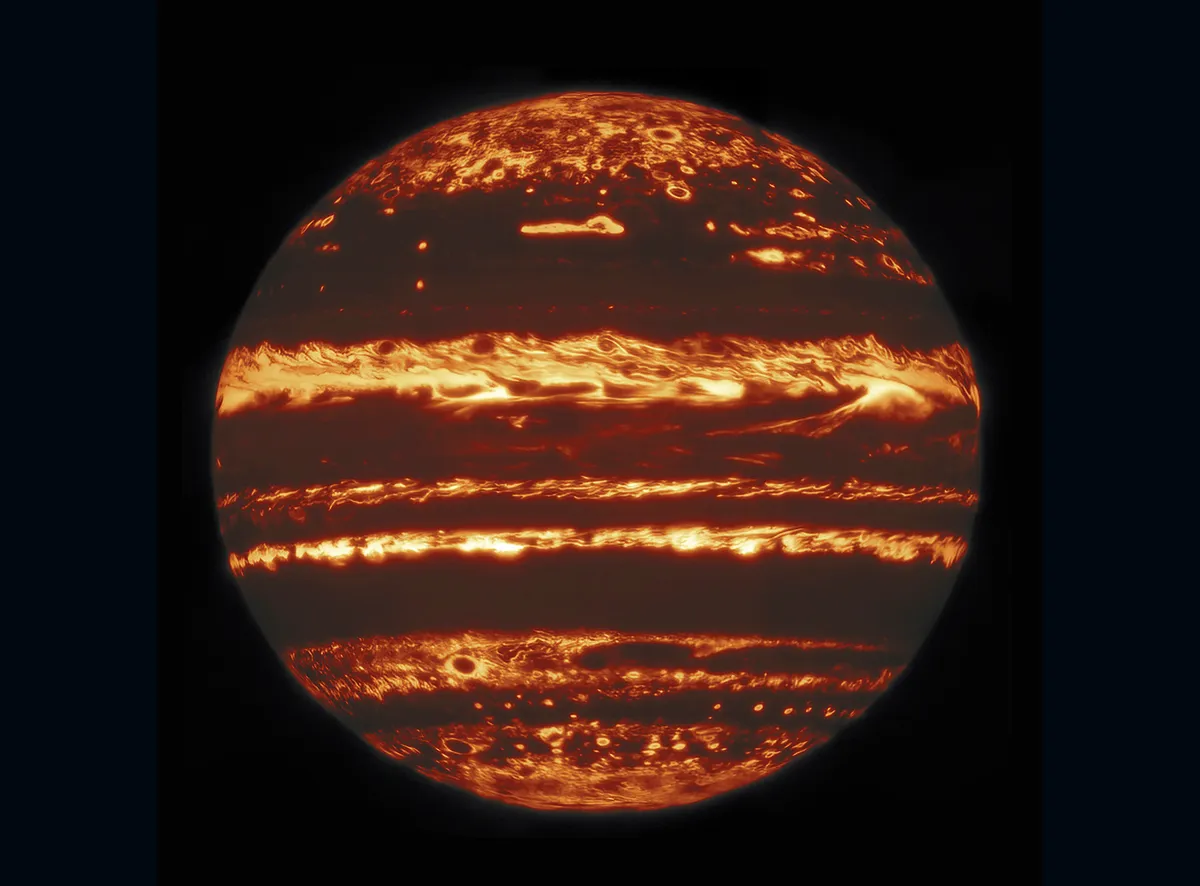The Dark Energy Camera has turned its sights on one of the most famous, most striking cosmic clouds: the Rosette Nebula.
This colourful capture of the enormous nebula was produced to celebrate the 5th anniversary of NOIRLab, the U.S. National Science Foundation's National Optical-Infrared Astronomy Research Laboratory.
Here are 10 reasons why the Dark Energy Camera's new Rosette Nebula image is so amazing.
More from NOIRLab

It shows a cosmic cloud located 5,000 lightyears from Earth, meaning its light takes so long to reach us, we're seeing it as it existed 5,000 years ago.
The Rosette is much bigger than the more famous Orion Nebula – five times larger in fact – yet both span roughly the same area in the night sky because the Rosette is four times further away.
This colourful image is full of red, gold and purple hues, lit up by NGC 2244, a young star cluster at the heart of the nebula.
Radiation from young stars in the NGC 2244 cluster ionises hydrogen gas, which not only generates the amazing array of colours seen in the image, but is also carving out the centre of the nebula.
In the image, different colours represent different chemicals, red representing highly energised hydrogen, gold and yellow indicating ionised oxygen and pink revealing light emitted by ionised silicon.

By capturing a clear view of star cluster NGC 2244, the Dark Energy Cam is providing astronomers with a spectacular view of a 2-million-year-old object, born out of the nebula's gasses, clumped together by gravity.
We can clearly see streams of dark cosmic dust, so thick, cold and clumpy that they don't appear to glow in colour like the rest of the nebula.
The image clearly shows a feature known as the 'Wrench Trunk' – seen around the 1 o'clock position of the central cavity – a dusty structure whose shape traces the Rosette Nebula's magnetic field.
Dark globulettes, blobs of dust seen in the image are tiny: just a few times more massive than Jupiter. Hundreds of them are peppered around the Rosette Nebula and may host exoplanets and brown dwarfs (failed stars).
We're witnessing the slow death of the Rosette Nebula, as in about 10 million years' time, radiation from those hot, powerful young stars of NGC 244 will have destroyed the nebula, their own cosmic birthplace.
What do you like about this image of the Rosette Nebula? Let us know by emailing contactus@skyatnightmagazine.com
